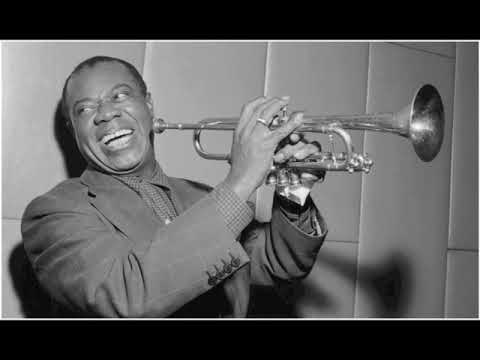

|
Music Group 2025-03-20Music of New Orleans |
 Gottschalk: Bamboula, Op. 2
Louis Moreau Gottschalk (1828-69). Bamboula: a music-dance form whose name comes from the bamboula drum. It developed in Africa and was brought to the United States and Caribbean by enslaved Africans. The bamboula moved from Haiti (Saint-Domingue) to Alabama and Louisiana, especially in New Orleans. The bamboula became one of many music-dance traditions that became part of the city’s soundscape. The pianist is Alan Feinberg.
Gottschalk: Bamboula, Op. 2
Louis Moreau Gottschalk (1828-69). Bamboula: a music-dance form whose name comes from the bamboula drum. It developed in Africa and was brought to the United States and Caribbean by enslaved Africans. The bamboula moved from Haiti (Saint-Domingue) to Alabama and Louisiana, especially in New Orleans. The bamboula became one of many music-dance traditions that became part of the city’s soundscape. The pianist is Alan Feinberg.
 Buddy Bolden Blues
Buddy Bolden (1877-1931), cornetist, is supposedly the first jazz musician in New Orleans.
Buddy Bolden Blues
Buddy Bolden (1877-1931), cornetist, is supposedly the first jazz musician in New Orleans.
 Dixieland
First recording of Dixieland or original jazz music: Livery Stable Blues by the Original Dixieland Jass (Jazz) Band (1917). Sicilian influence of Bandleader Nick LaRocca & drummer Tony Sbarbaro.
Dixieland
First recording of Dixieland or original jazz music: Livery Stable Blues by the Original Dixieland Jass (Jazz) Band (1917). Sicilian influence of Bandleader Nick LaRocca & drummer Tony Sbarbaro.
 Jelly Roll Morton: The Spanish Tinge
Jelly Roll Morton (1890-41).
Jelly Roll Morton: The Spanish Tinge
Jelly Roll Morton (1890-41).
 Louis Armstrong: When the Saints Go Marching In
Louis Armstrong (1901-71) recorded When the Saints Go Marching In, originally a Christian gospel song, in 1938. It’s now an iconic song in New Orleans.
Louis Armstrong: When the Saints Go Marching In
Louis Armstrong (1901-71) recorded When the Saints Go Marching In, originally a Christian gospel song, in 1938. It’s now an iconic song in New Orleans.
 Fats Domino: County Boy
Fats Domino (1928-2017), County Boy. Cuban tresillo rhythm.
Fats Domino: County Boy
Fats Domino (1928-2017), County Boy. Cuban tresillo rhythm.
 Zydeco
Performers are Jeffrey Broussard and the Creole Cowboys.
Zydeco is a music genre that was created in rural Southwest Louisiana by Afro-Americans of Creole heritage. It blends blues and rhythm and blues with music indigenous to the Louisiana Creoles, such as la la and juré. Musicians use the French accordion and a Creole washboard instrument called the frottoir.
Zydeco
Performers are Jeffrey Broussard and the Creole Cowboys.
Zydeco is a music genre that was created in rural Southwest Louisiana by Afro-Americans of Creole heritage. It blends blues and rhythm and blues with music indigenous to the Louisiana Creoles, such as la la and juré. Musicians use the French accordion and a Creole washboard instrument called the frottoir.
 Mia X: I'll Take Ya Man.
Mia X (1970—) the mother of southern rap.
Mia X: I'll Take Ya Man.
Mia X (1970—) the mother of southern rap.
 Exhorder: Year of the Goat
Exhorder — first band to combine doom metal & up-tempo thrash metal.
Exhorder: Year of the Goat
Exhorder — first band to combine doom metal & up-tempo thrash metal.
 New Orleans Second Lines
Introduction to second line parades. We participated in one with 801 Royal, our favorite bar and a casualty of Covid.
New Orleans Second Lines
Introduction to second line parades. We participated in one with 801 Royal, our favorite bar and a casualty of Covid.
 Second Line in New Orleans
We see second line parades after weddings throughout the day on the weekends.
Second Line in New Orleans
We see second line parades after weddings throughout the day on the weekends.
 Fats Domino Memorial Second Line
9th Ward New Orleans Funeral Procession. This parade took place in the Ninth Ward (a black neighborhood) that was decimated when the levee broke during Hurricane Katrina. The typical music for a funeral starts at 8:40.
Fats Domino Memorial Second Line
9th Ward New Orleans Funeral Procession. This parade took place in the Ninth Ward (a black neighborhood) that was decimated when the levee broke during Hurricane Katrina. The typical music for a funeral starts at 8:40.